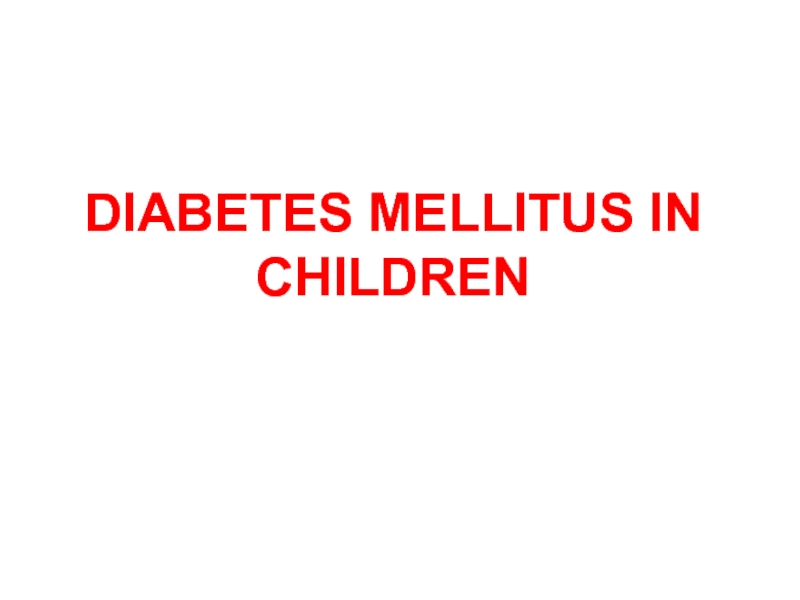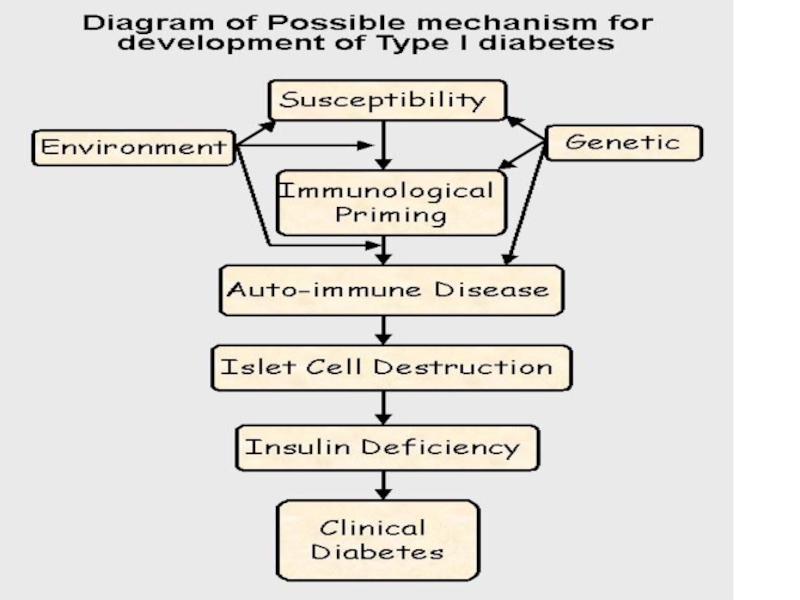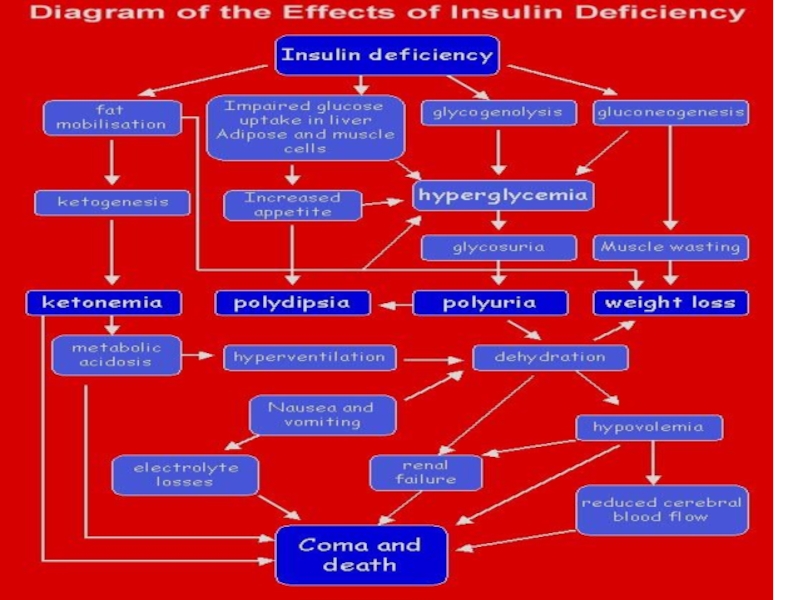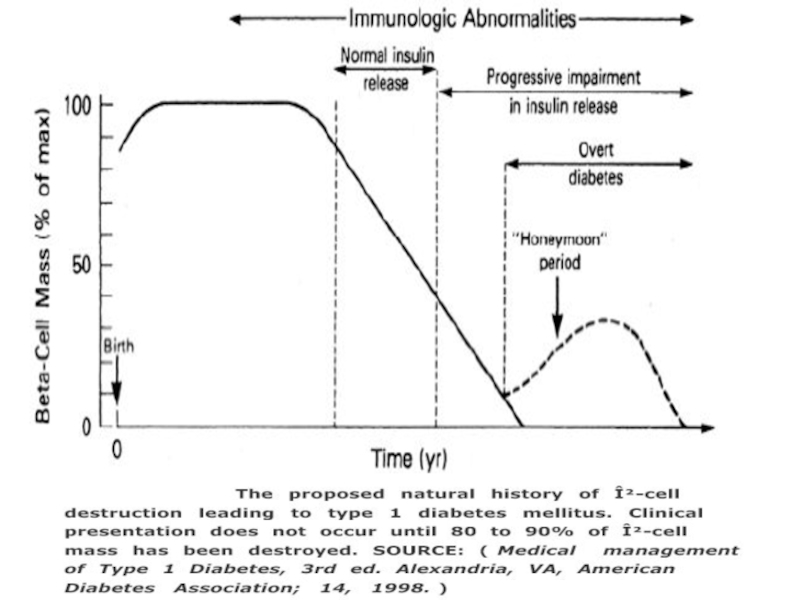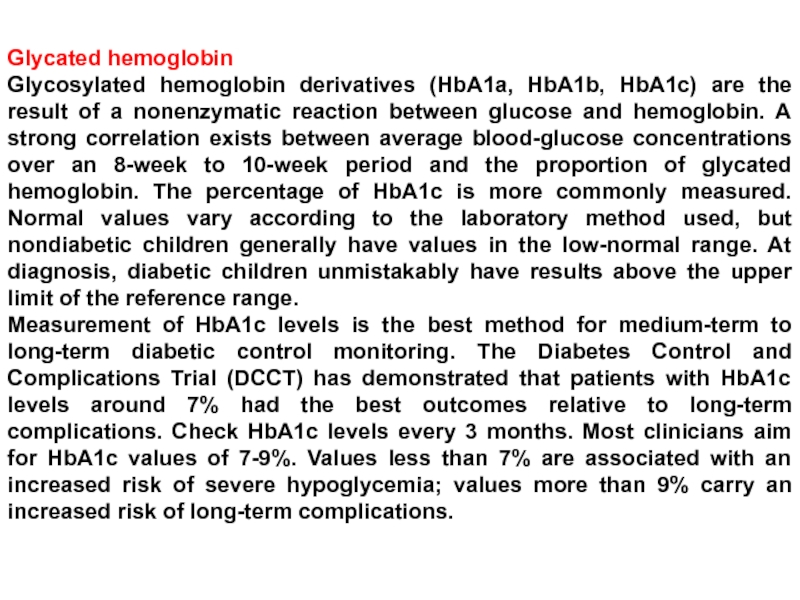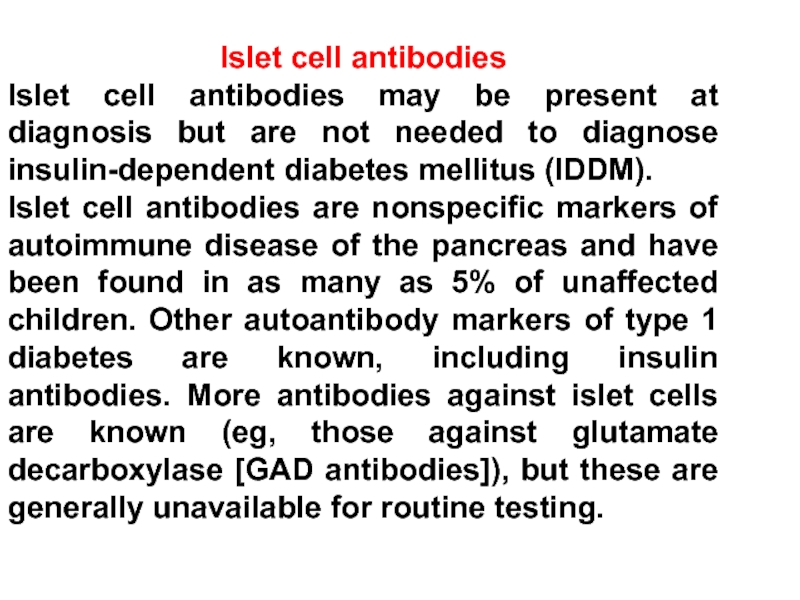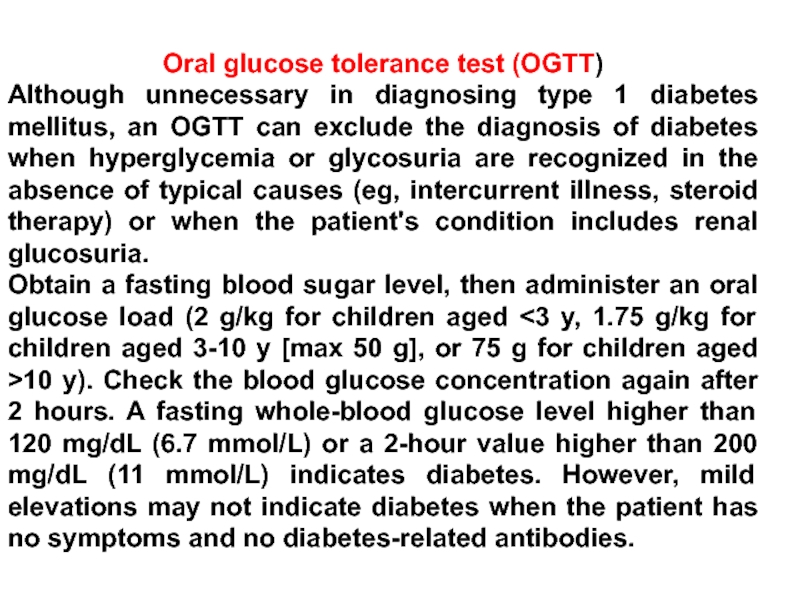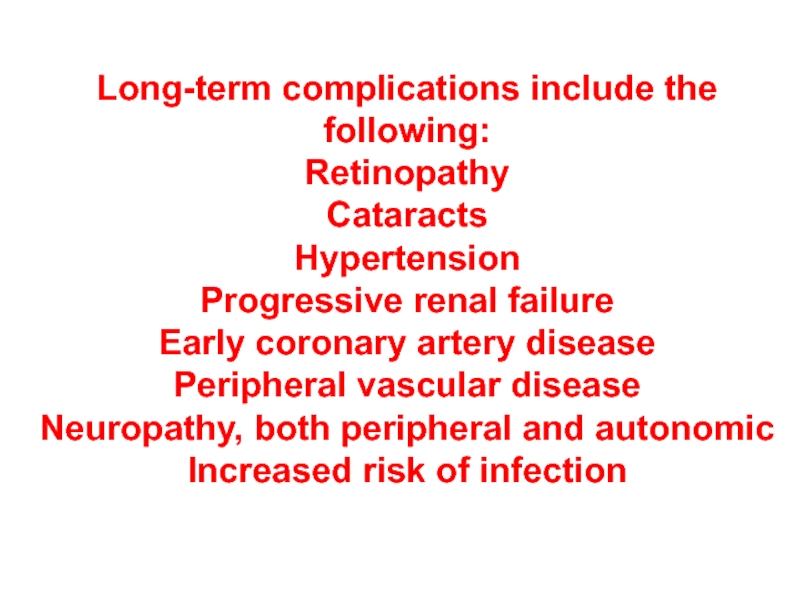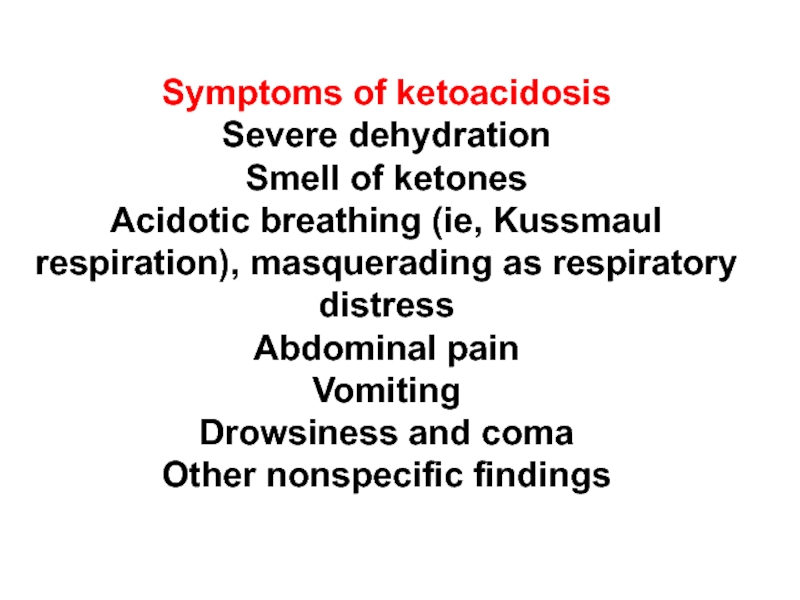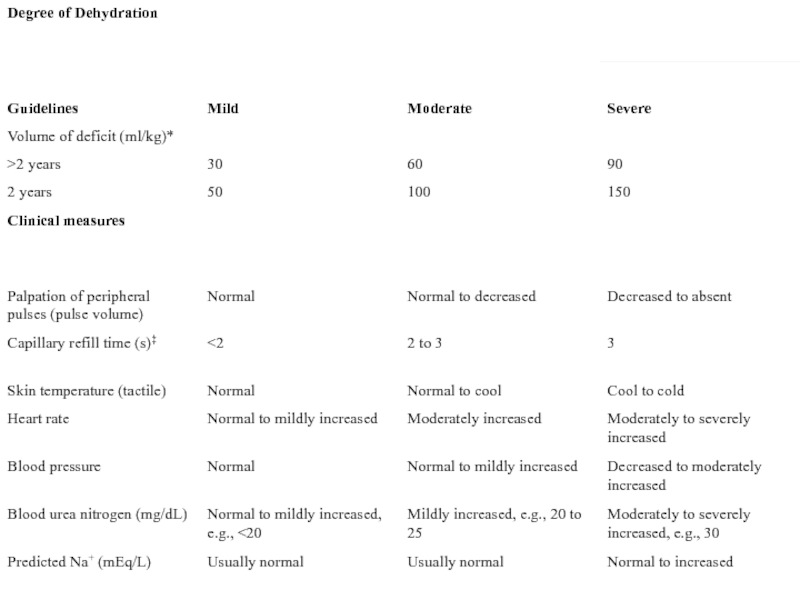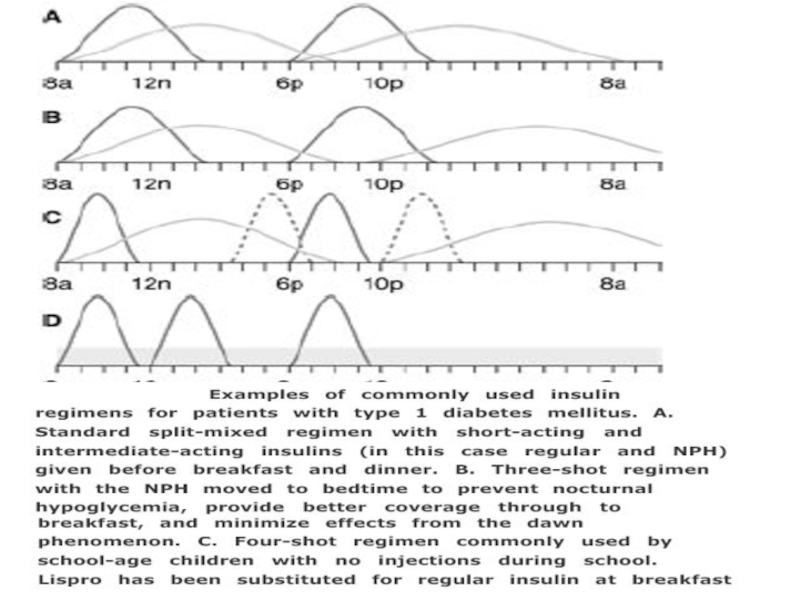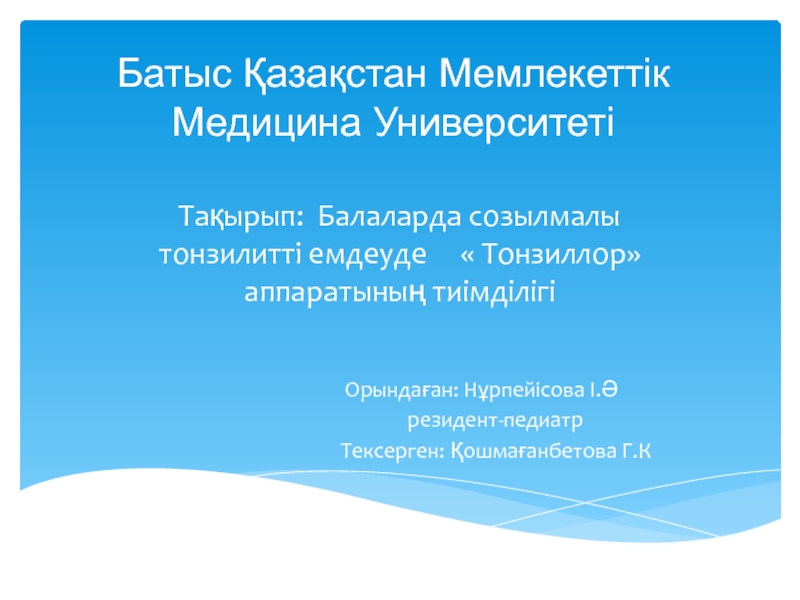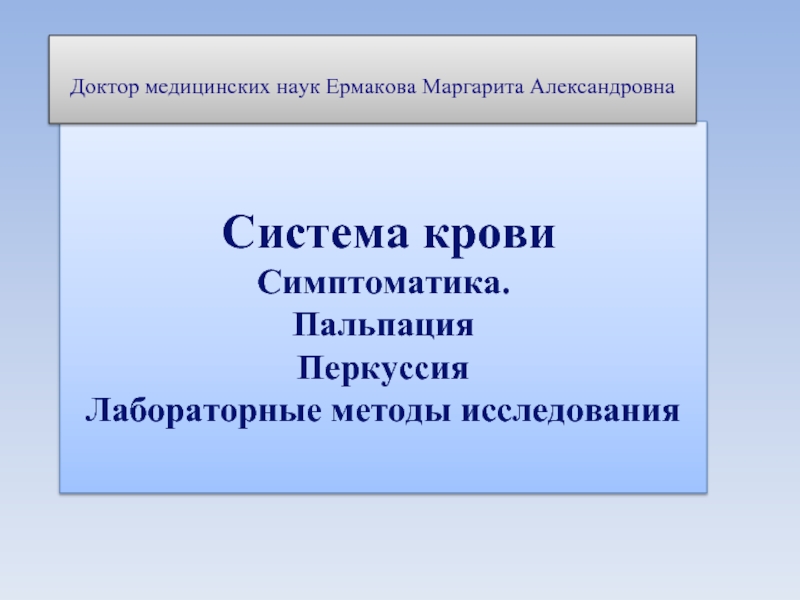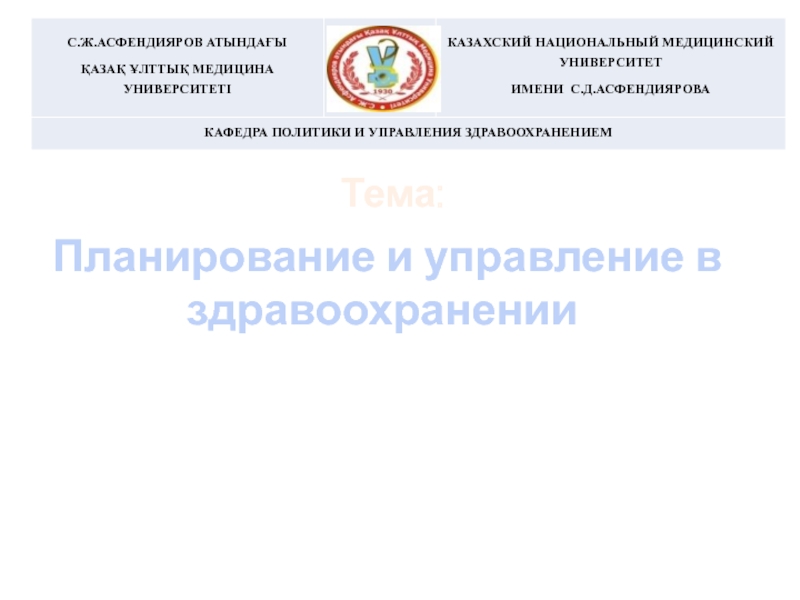- Главная
- Разное
- Дизайн
- Бизнес и предпринимательство
- Аналитика
- Образование
- Развлечения
- Красота и здоровье
- Финансы
- Государство
- Путешествия
- Спорт
- Недвижимость
- Армия
- Графика
- Культурология
- Еда и кулинария
- Лингвистика
- Английский язык
- Астрономия
- Алгебра
- Биология
- География
- Детские презентации
- Информатика
- История
- Литература
- Маркетинг
- Математика
- Медицина
- Менеджмент
- Музыка
- МХК
- Немецкий язык
- ОБЖ
- Обществознание
- Окружающий мир
- Педагогика
- Русский язык
- Технология
- Физика
- Философия
- Химия
- Шаблоны, картинки для презентаций
- Экология
- Экономика
- Юриспруденция
Diabetes mellitus in children презентация
Содержание
- 1. Diabetes mellitus in children
- 5. Blood glucose Apart from transient illness-induced or
- 6. Glycated hemoglobin Glycosylated hemoglobin derivatives (HbA1a, HbA1b,
- 7. Islet cell antibodies Islet cell antibodies may
- 8. Oral glucose tolerance test (OGTT) Although unnecessary
- 9. Long-term complications include the following: Retinopathy Cataracts
- 10. Symptoms of ketoacidosis Severe dehydration Smell of
- 11. Peripheral perfusion
Слайд 5Blood glucose
Apart from transient illness-induced or stress-induced hyperglycemia, a random whole-blood
glucose concentration of more than 200 mg/dL (11 mmol/L) is diagnostic for diabetes, as is a fasting whole-blood glucose concentration that exceeds 120 mg/dL (7 mmol/L). In the absence of symptoms, the physician must confirm these results on a different day. Most children with diabetes detected because of symptoms have a blood glucose level of at least 250 mg/dL (14 mmol/L).
Слайд 6Glycated hemoglobin
Glycosylated hemoglobin derivatives (HbA1a, HbA1b, HbA1c) are the result of
a nonenzymatic reaction between glucose and hemoglobin. A strong correlation exists between average blood-glucose concentrations over an 8-week to 10-week period and the proportion of glycated hemoglobin. The percentage of HbA1c is more commonly measured. Normal values vary according to the laboratory method used, but nondiabetic children generally have values in the low-normal range. At diagnosis, diabetic children unmistakably have results above the upper limit of the reference range.
Measurement of HbA1c levels is the best method for medium-term to long-term diabetic control monitoring. The Diabetes Control and Complications Trial (DCCT) has demonstrated that patients with HbA1c levels around 7% had the best outcomes relative to long-term complications. Check HbA1c levels every 3 months. Most clinicians aim for HbA1c values of 7-9%. Values less than 7% are associated with an increased risk of severe hypoglycemia; values more than 9% carry an increased risk of long-term complications.
Measurement of HbA1c levels is the best method for medium-term to long-term diabetic control monitoring. The Diabetes Control and Complications Trial (DCCT) has demonstrated that patients with HbA1c levels around 7% had the best outcomes relative to long-term complications. Check HbA1c levels every 3 months. Most clinicians aim for HbA1c values of 7-9%. Values less than 7% are associated with an increased risk of severe hypoglycemia; values more than 9% carry an increased risk of long-term complications.
Слайд 7Islet cell antibodies
Islet cell antibodies may be present at diagnosis but
are not needed to diagnose insulin-dependent diabetes mellitus (IDDM).
Islet cell antibodies are nonspecific markers of autoimmune disease of the pancreas and have been found in as many as 5% of unaffected children. Other autoantibody markers of type 1 diabetes are known, including insulin antibodies. More antibodies against islet cells are known (eg, those against glutamate decarboxylase [GAD antibodies]), but these are generally unavailable for routine testing.
Islet cell antibodies are nonspecific markers of autoimmune disease of the pancreas and have been found in as many as 5% of unaffected children. Other autoantibody markers of type 1 diabetes are known, including insulin antibodies. More antibodies against islet cells are known (eg, those against glutamate decarboxylase [GAD antibodies]), but these are generally unavailable for routine testing.
Слайд 8Oral glucose tolerance test (OGTT)
Although unnecessary in diagnosing type 1 diabetes
mellitus, an OGTT can exclude the diagnosis of diabetes when hyperglycemia or glycosuria are recognized in the absence of typical causes (eg, intercurrent illness, steroid therapy) or when the patient's condition includes renal glucosuria.
Obtain a fasting blood sugar level, then administer an oral glucose load (2 g/kg for children aged <3 y, 1.75 g/kg for children aged 3-10 y [max 50 g], or 75 g for children aged >10 y). Check the blood glucose concentration again after 2 hours. A fasting whole-blood glucose level higher than 120 mg/dL (6.7 mmol/L) or a 2-hour value higher than 200 mg/dL (11 mmol/L) indicates diabetes. However, mild elevations may not indicate diabetes when the patient has no symptoms and no diabetes-related antibodies.
Obtain a fasting blood sugar level, then administer an oral glucose load (2 g/kg for children aged <3 y, 1.75 g/kg for children aged 3-10 y [max 50 g], or 75 g for children aged >10 y). Check the blood glucose concentration again after 2 hours. A fasting whole-blood glucose level higher than 120 mg/dL (6.7 mmol/L) or a 2-hour value higher than 200 mg/dL (11 mmol/L) indicates diabetes. However, mild elevations may not indicate diabetes when the patient has no symptoms and no diabetes-related antibodies.
Слайд 9Long-term complications include the following:
Retinopathy
Cataracts
Hypertension
Progressive renal failure
Early coronary artery disease
Peripheral vascular
disease
Neuropathy, both peripheral and autonomic
Increased risk of infection
Neuropathy, both peripheral and autonomic
Increased risk of infection
Слайд 10Symptoms of ketoacidosis
Severe dehydration
Smell of ketones
Acidotic breathing (ie, Kussmaul respiration), masquerading
as respiratory distress
Abdominal pain
Vomiting
Drowsiness and coma
Other nonspecific findings
Abdominal pain
Vomiting
Drowsiness and coma
Other nonspecific findings
